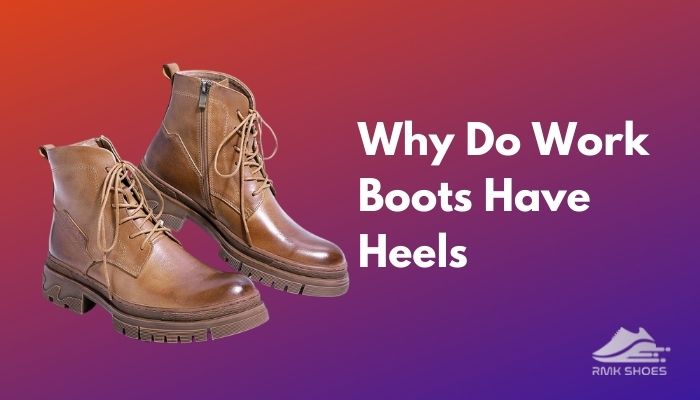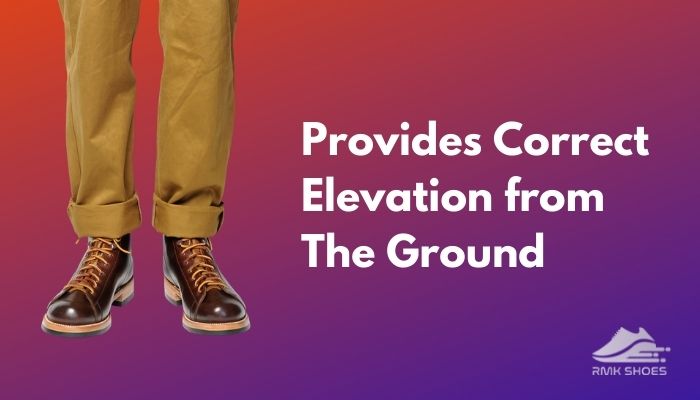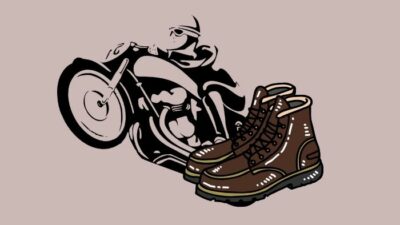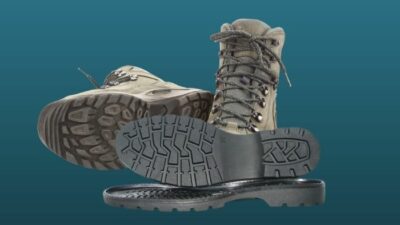The slight elevation that comes from the heel of work boots is quite eye-catching. But do you know why work boots have such high heels?
No worries, you will find it in this article.
Being a boot enthusiast, I had to undergo a lot of research on work boots. So I thought, why not explain the significance of work boot heels.
So, why do work boots have heels?

Continue reading to acknowledge more about work boot heels and their purposes.
Why Do Work Boots Have Heels?
Work boots are high-performance footwear. They are mostly worn to protect the foot from falling heavy things or avoid being cut by sharp objects.
From the toe cap to the heels, each aspect of the work boots serves a purpose. Work boots with heels not only have one or two benefits, but they have a slew of them.
All these advantages of work boot heels make your work much easier and more exciting.
So, let us look at the reasons for work boot heels:
Helps to Walk On Steep Slope
The heel of the boots is the initial point of contact with the ground while walking. This is why, after long hours of wearing flat-soled boots or shoes, your heel begins to hurt.
Work boots with heels; on the other hand, don’t ache your heels. Instead, they keep the heels relaxed for a long time.
Furthermore, high heel work boots feature thick soles, which makes the heel dig in very firmly when you walk on inclined ground. As a result, you can stroll down a steep hill easily.
The elevated heels also give excellent traction, which prevents slipping on slick surfaces.
But before that, check out what is a Steel Shank In A Work Boot.
Helps in Bumpy Ground
The most challenging thing for work boots is to withstand irregular and bumpy terrains. Luckily, the raised heels of work boots can easily withstand all the hurdles that a rocky surface might throw at them.
In addition, the boots are designed with a gap between the tip and the heel to enable a firm grip on any surface.
No matter how slippery the ground is, the elevated heel makes the work boots slip-resistant. Thus, the possibility of unintentional slip decreases.
Follow our guide to know Are Timberlands Good Work Boots.
Provides Correct Elevation from the Ground

Outdoor activities entail the use of work boots. Sometimes you may need to work on muddy grounds; at that time, high-heeled work boots can be your ultimate savior.
How?
The distance between the ground and the sole of your boots is about an inch, which is pretty much enough to protect your feet from the filthy ground and keep them dry.
Additionally, the heels are rugged and have heavy tread, which is a tremendous advantage for workers as it offers an outstanding grip on uneven ground.
Also, follow our guide on How Long Do Work Boots Last.
Improves the Balance
While working outdoors, it is essential to maintain balance. Unfortunately, most boots are the sole reason for losing balance.
But the high-heeled work boots are specially designed to keep the balance solid.
When you wear work boots with an increased heel, your center of gravity is moved forward. When this occurs, the ball of each foot supports a part of your body weight.
In addition, the muscles in that area of the foot become very strong. As a result, the overall balance improves, and the risk of falling on your face reduces.
Check out our separate post: What Work Boots Are Made In The USA.
Prevents Plantar Fasciitis
What is plantar fasciitis?
Plantar fasciitis is a foot condition caused by the swelling of tissues on the sole of your foot. Plantar fasciitis takes place when you apply a lot of stress to your heels.
Luckily, work boots with elevated heels can prevent plantar fasciitis.
The high heel work boots include cushioning material, which reduces the stress that a foot experiences. With less stress on your heel, you can stand for long hours in your work boots without any pain.
Also, check out our guide to know Are Work Boots Good For Hiking.
Increases the Durability
While working on construction sites, you need to wear high-performance work boots to keep up with you. And what can be a better option other than high-heeled work boots?
The thick outsoles of high heels make the boots resistant to tear and wear. The thick soles can withstand pressure and damage. Thus, the life of your work boots extends, and you don’t need to replace your boots frequently.
Comfortable to Wear
Many of you may assume, the complex and thick sole of high-heeled work boots can cause discomfort to your feet. But the fact is, this raised heel is mainly designed to make your feet comfier.
The roomier area around your toe and the tremendous support to your foot structure makes the boots very comfortable to wear.
Standing in your boots for 7-8 hours will ultimately hurt your heel, and this is inevitable. What high heel work boots do is, with all their unique features, they create a comfortable atmosphere for your feet.
How Many Types of Work Boot Soles Are There?
There are two types of work boot soles out in the market: the wedge sole and the regular heel sole.
Both these outsoles are built differently, have different appearances and features.
It’s up to you which sole to choose depending upon the ground you will work and for how long you will be there.
Wedge soles are preferred to use on hard and flat surfaces. The flat bottom and shallow treads of wedge soles allow more touch with the ground. As a result, the friction is greater on hard surfaces.
Wedge soles also share the weight of your foot evenly for better cushioning and shock resistance.
On the other hand, heel soles are specially built to withstand the ruggedness of rocky grounds. Heel soles instead function as high-performing boot with more grooves and lugs digging into the ground.
Heel soles are particularly useful for outdoor work since they provide strong traction, stability and, most importantly, keep your feet safe from injuries.
Are Work Boot Heels Bad for Your Feet?
High heel work boots are used to protect your feet from accidents and endure all the challenges in your work site.
However, high heel boots are pretty heavy. Wearing heavy boots for a long time is not suitable for your feet.
If you want to keep your feet healthy, don’t wear boots more than 2 inches heel and don’t stay in them for a long time.
Sum Up
The elevated heel on your work boots is there for multiple purposes, including keeping you upright on unforgiving terrains.
So next time you look at the heels of your work boots, don’t forget to thank them for saving your feet.
I tried to make this article as informative as possible.
If you have any queries, please leave them in the comment box.




